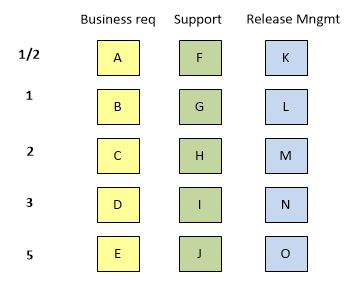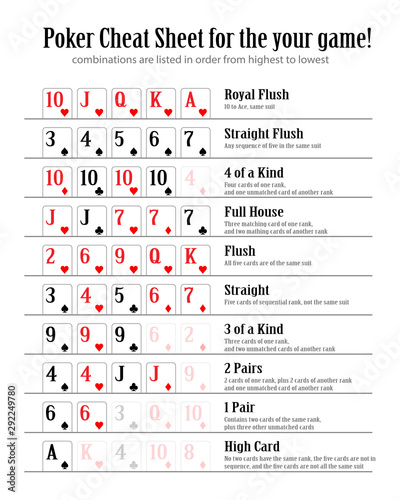Poker Scale
Planning Poker uses of the Fibonacci sequence to assign a point value to a feature or user story. The Fibonacci sequence is a mathematical series of numbers that was introduced in the 13th century and used to explain certain formative aspects of nature, such as the branching of trees. Planning Poker is an agile estimating and planning technique that is consensus based. To start a poker planning session, the product owner or customer reads an agile user story or describes a feature to the estimators. Each estimator is holding a deck of Planning Poker cards with values like 0, 1. DIVING STATUS is manufacturer of poker gauge and service provider of weardown measurements of tailshaft. Poker gauge The propeller shaft in the after peak tank is provided with inboard and outboard seals. These seals contain nitrile rubber or viton lip seal which. Poker Chip Scale The processing of personal data is Poker Chip Scale exclusively managed to the end of account maintenance for use of the services as offered by Slotty.
Poker Range Calculator
The Poker Hand Range Calculator calculates Texas Hold'em hand ranges from percentage values and vice-versa. All this online and free. Setup a poker range by selecting the hands in the poker hand calculator and share the link which is automatically generated for you.
Questions? Refer to our Poker Hand Calculator FAQ page.
Poker Hand Range Calculator
Warning! The Poker Hand Range Calculator requires JavaScript to be enabled in your browser.
Please enable JavaScript.
Poker Scale Winning Hands
| AA | AKs | AQs | AJs | ATs | A9s | A8s | A7s | A6s | A5s | A4s | A3s | A2s |
| AKo | KK | KQs | KJs | KTs | K9s | K8s | K7s | K6s | K5s | K4s | K3s | K2s |
| AQo | KQo | QJs | QTs | Q9s | Q8s | Q7s | Q6s | Q5s | Q4s | Q3s | Q2s | |
| AJo | KJo | QJo | JJ | JTs | J9s | J8s | J7s | J6s | J5s | J4s | J3s | J2s |
| ATo | KTo | QTo | JTo | TT | T9s | T8s | T7s | T6s | T5s | T4s | T3s | T2s |
| A9o | K9o | Q9o | J9o | T9o | 99 | 98s | 97s | 96s | 95s | 94s | 93s | 92s |
| A8o | K8o | Q8o | J8o | T8o | 98o | 88 | 87s | 86s | 85s | 84s | 83s | 82s |
| A7o | K7o | Q7o | J7o | T7o | 97o | 87o | 77 | 76s | 75s | 74s | 73s | 72s |
| A6o | K6o | Q6o | J6o | T6o | 96o | 86o | 76o | 66 | 65s | 64s | 63s | 62s |
| A5o | K5o | Q5o | J5o | T5o | 95o | 85o | 75o | 65o | 55 | 54s | 53s | 52s |
| A4o | K4o | Q4o | J4o | T4o | 94o | 84o | 74o | 64o | 54o | 44 | 43s | 42s |
| A3o | K3o | Q3o | J3o | T3o | 93o | 83o | 73o | 63o | 53o | 43o | 33 | 32s |
| A2o | K2o | Q2o | J2o | T2o | 92o | 82o | 72o | 62o | 52o | 42o | 32o | 22 |
100%
Poker Hand Calculator For Poker Ranges
To fully utilize the poker hand calculator, follow the steps below:
- 1. You obviously need a poker room to play. Make sure to check out one of the best poker rooms, William Hill.
- 2. So, now you're playing at one of the poker rooms. You also have our range calculator available. You may have an idea how of the range of your opponents. But how to keep track of all opponents' PFR, VPIP, etc? Here comes Holdem Manager into the picture. Holdem Manager is a poker tracker software: it keeps track of your opponents' play and shows the most important statistics of a player while playing. A time-limited version is available free. This piece of software is a must to have - even for low stakes.
- 3. Ok, now you're using Holdem Manager , and see that your opponent is re-raising (4-bet) 4% of his hands. But what is exactly 4%? Is TT in it? Simply use our range calculator to get an idea of his range. Although - with one million simulations per hand - the calculator's results are reliable, always keep in mind that there are other factors to take into account: your image shown at the table, the last hands played, etc. You will see that combining HM and our calculator makes you play poker much more profitable. The Poker Hand Range calculator will help you to make the best poker reads - you will most likely be able to read you opponents' poker tells. Just enter a percent value and hit calculate. The tool will show the hand range for the given percent value.
- 4. Enjoy more profitable poker!
Effective estimation is one of the toughest challenges software developers face in their jobs. Regardless of team size, they need to define, estimate, and distribute work throughout a team. As teams get larger, it becomes even more important to build good habits around planning and estimating work. Lack of planning and estimating reduce confidence in a program, breaks down relationships between the team and the business, and makes development harder on everyone.
Best Scrum Software Every Project Needs
A powerful scrum software that supports scrum project management. It features scrum tools like user story map, product backlog management, sprint backlog management, task management, daily scrum meeting, sprint planning tool, sprint review tool, sprint retrospective tool, burndown, impediment, stakeholder and team management.
The Accuracy of Group vs. Individual Estimation
According to some study on the accuracy of estimation of effort between individual and group in an experiment for a software project. 20 software professionals from the same company individually estimated the work effort required to implement the same software development project. The participants had different background and roles and the software project had previously been implemented. After that, they formed five groups. Each group agreed on one estimation by discussing and combining of the knowledge among them.

Result – The estimates based on group discussions were more accurate than the individual estimates.
What is Planning Poker?
Planning poker (also known as Scrum poker) is a consensus-based, gamified technique for estimating, mostly used to estimate effort or relative size of development goals in software development.

Steps for Planning Poker
- To start a poker planning session, the product owner or customer reads an agile user story or describes a feature to the estimators.
For example:
“Customer logs in to the reservation system”
“Customer enters search criteria for a hotel reservation” - Team members of the group make estimates by playing numbered cards face-down to the table without revealing their estimate (Fibonacci values: 1,2,3,5,8,13,20,40)
- Cards are simultaneously displayed
- The estimates are then discussed and high and low estimates are explained
- Repeat as needed until estimates converge
Poker Scaletta
By hiding the figures in this way, the group can avoid the cognitive bias of anchoring, where the first number spoken aloud sets a precedent for subsequent estimates.
Poker Scale Of Hands
Agile Estimation – Relative vs Absolute
An estimate is nothing more than a well educated guess. We use all the knowledge and experience at hand to make a guess about the amount of time it is going to take. So instead of looking at every new work item separately, why not compare it to previously finished work items? It’s easier for humans to relate to similar items than to guess the actual size of things anyway.
For example, is it closer to this really small thing? Or is it more like this normal sized item? Or is it really huge like that one piece of work we finished last month? Doing relative estimates will not only reduce the amount of time spent on estimating work, it will also heavily increase the accuracy of the estimates.
Our brain is not capable of doing absolute estimates; we always put that new thing that we need to estimate in relationship to things we already know.
Fibonacci sequence and Planning Poker
Planning Poker uses of the Fibonacci sequence to assign a point value to a feature or user story. The Fibonacci sequence is a mathematical series of numbers that was introduced in the 13th century and used to explain certain formative aspects of nature, such as the branching of trees. The series is generated by adding the two previous numbers together to get the next value in the sequence: 0, 1, 1, 2, 3, 5, 8, 13, 21, and so on.
For agile estimation purposes, some of the numbers have been changed, resulting in the following series: 1, 2, 3, 5, 8, 13, 20, 40, 100 as shown in the Figure below:
The Interpretation of the point assigned to a poker card is listed in the table below:
| Card(s) | Interpretation |
|---|---|
| 0 | Task is already completed. |
| 1/2 | The task is tiny. |
| 1, 2, 3 | These are used for small tasks. |
| 5, 8, 13 | These are used for medium sized tasks. |
| 20, 40 | These are used for large tasks. |
| 100 | These are used for very large tasks. |
| <infinity> | The task is huge. |
| ? | No idea how long it takes to complete this task. |
| <cup of coffee> | I am hungry 🙂 |

Point vs Hour Value in Estimation
So why use story points instead of time values? Story pointing allows the team to focus on the complexity and time involved in delivering a piece of work. The team compares the new work against work they’ve already done. They compare the complexity of the new assignment against past challenges and rank the difficulty as well as the time required.
For example, we don’t often account for “the cost of doing business.” Meetings, email, code reviews, etc. with time values. But in reality, all these are necessary practices throughout in our daily life, but don’t actually count as “work.” Story points isolate the software development work from the associated logistic work items, so estimates using point based should more consistent than hour base approach.
| About Visual Paradigm |
| Visual Paradigm help organizations stay competitive and responsive to change faster and better in today’s fast changing environment. Our award-winning products are trusted by over 320,000 users in companies ranging from small business, consultants, to blue chip organizations, universities and government units across the globe. It enables organizations to improve business and IT agility and foster innovation through popular open standards and process frameworks.Visual Paradigm, a killer Agile feature in 2018, introduced Scrum Process Canvas for automating the way a Scrum team to create, manage and deploy software application that empowers the team to continuously improve their performance at unprecedented speed and scale. Manage the Entire Scrum Process in One Page
|